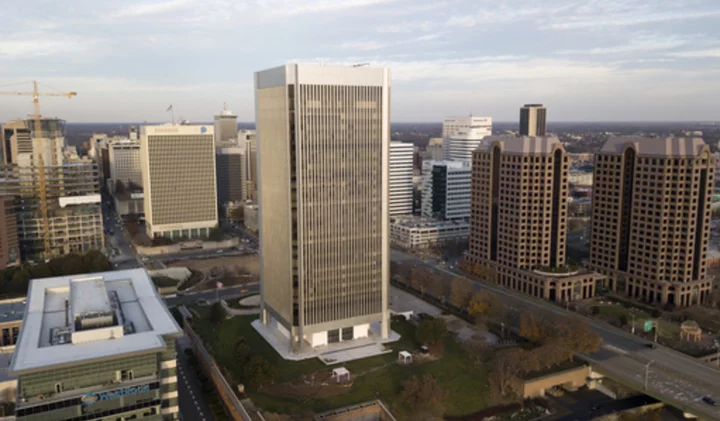Inflation remains “stubbornly high” and is no longer making much progress toward the Federal Reserve's 2% target, a top Fed official said Wednesday, hours after price data for April were released.
In an interview, Tom Barkin, president of the Federal Reserve Bank of Richmond, said he is also seeing some signs that banks in his region — which includes Virginia, North Carolina, South Carolina and West Virginia — are slowing their lending. It isn't yet clear, he said, what consequences that trend might have on the economy and inflation.
For now, Barkin said, inflation remains unacceptably high. A government report Wednesday on consumer prices in April showed that inflation fell to 4.9%, the lowest year-over-year level in two years. Yet excluding volatile food and energy costs, inflation stayed high from March to April and was up 5.5% from a year earlier, little changed since December.
Barkin noted that the latest figures reflected some one-time fluctuations — sharp drops in airline fares and hotel room prices, for example, and a spike in the cost of used cars — that may not persist.
“Just looking through all that it still paints a picture of inflation that is stubbornly high,” he said.
Core inflation has been stuck in a range of 0.3%-0.5% for months, he added, “where you’d really like it to be moving down and in concert with our target."
Wall Street investors have told themselves a variety of stories about trends that should reduce inflation, Barkin said. The unraveling of supply chains was supposed to bring goods prices lower and supply chains have untangled, “but you still have inflation,” he said.
Another hope was that the Fed's rapid interest rate hikes would rein in Americans' expectations of inflation, Barkin said. Inflation expectations can be self-fulfilling — if companies don't expect prices to rise much, they won't see a need to raise their own prices.
Yet even as “expectations have come down,” Barkin said, “inflation is still stubbornly high.”
“I’m still open to the notion that demand is settling and inflation will follow in relatively short order, but I wouldn’t say I’m convinced yet,” he said.
When asked what would cause him to support more rate hikes, Barkin pointed to any signs that demand was re-accelerating. Consumer spending was flat in February and March, he noted, a sign the economy is cooling in a way that could help bring down inflation.
“And so what would be the things that would be most compelling to me?” he asked. “Signals that demand, in fact, was not ebbing. ... (Or) something that made you think inflation was accelerating or poised to accelerate.”
In a policy statement it issued last week, the Fed removed a sentence from its previous statement that had said “some additional” rate hikes might be needed. It replaced that sentence with language that said it would now weigh a range of factors in “determining the extent” to which future hikes might be necessary.
Most analysts saw that change as evidence that the Fed will now pause its rate hikes after having raised its benchmark rate 10 times since March 2022, from near zero to about 5.1%, the highest level in 16 years. The rate hikes, which have been intended to cool spending, growth and inflation, have elevated the costs of auto loans, credit card borrowing and business loans.
In the interview, Barkin said the Fed’s message after its meeting last week was “explicitly not a pause” in its rate increases “or even necessarily a peak.” Instead, he said, it provided “the optionality to do more, if you need to do it. And also the optionality to wait if waiting is appropriate.”
Barkin’s remarks were broadly similar to what other Fed officials have said in recent days. John Williams, president of the New York Fed, noted Tuesday that “we haven't said we're done raising rates.”
Rather, Williams said, the Fed is no longer indicating that it will raise rates at each meeting. Instead, he said, the central bank will do what it deems necessary based on the latest economic data, including bank lending trends.
Williams also stressed that the Fed was unlikely to cut its key rate this year, even though investors expect three rate cuts this year, according to CME's Fedwatch tool.
The Fed will keep rates at a high enough level to restrain the economy “for quite some time,” Williams said. “I do not see any need ... to cut interest rates this year.”

